#historical fashion vol 1
Explore tagged Tumblr posts
Text
Somehow more than 50 copies of the coloring book have sold!! 🥹❤️ I can’t believe it
I am the artist! Do not post without permission & credit! Thank you! Come visit me over on: instagram.com/ellenartistic or tiktok: @ellenartistic
Print copy of the book: https://www.amazon.com/B0CLYRQYT1/
Pdf version: https://ko-fi.com/ellenartistic/shop
#historically inspired#adult coloring book#historical fashion vol 1#historical fashion#historical costuming#ellenart#lnart#costume design#ellen artistic#coloring book
325 notes
·
View notes
Text
That’s so exciting!!! I hope you have so much fun and have a great rest of your winter holidays!! ❤️❤️❤️
@artist-ellen Ahhh! Look what i got! This is literally the best thing ever! I can't wait to start on it😭😭😭❤❤❤
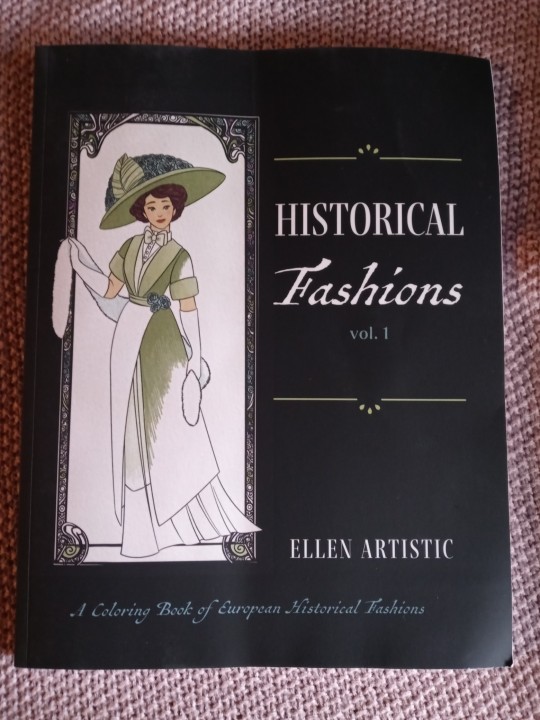
#historical fashion vol 1#merry christmas#happy holidays#im so excited#I hope you have so much fun#xoxo
56 notes
·
View notes
Note
Everyone wants the jacket lore do not be silent
Okay obviously this is going to be me rambling on about my own headcanons but also the tiny canon reasons I have these headcanons.
Okay first I'll start off by saying the jacket I personally Always draw Rip in and the one from my design used to belong to Booster during Boosters (short lived) College days.
That being said, It's a jacket that's very...dated and old for the future, so I believe it was from a thrift shop before Booster owned it (so while being in a similar style to futuristic bomber jackets, it lacks that neon bright color scheme that seems to of been popular for Boosters generation.)
Here is just an example of Rip side-by-side to Michelle (who's outfit is based on her introduction in Issue 15 of BG vol 1- post Booster leaving, and post her mothers death). again, that 80s-escque big shouldered, large collar/lapel was in, but the colors are muted and off. I like to think about future fashion trends a lot, how staying on trend in the present is something Booster clearly cares about, how that probably wasn't as much of a possibility in his own past (the future).
Rip's design is based on a theoretical future fashion while having more earthy muted elements- augh its a whole meta thing I got going on in my head. Earth tones instead of neon primary colors, Silver/chrome accents instead of Gold, etc etc.
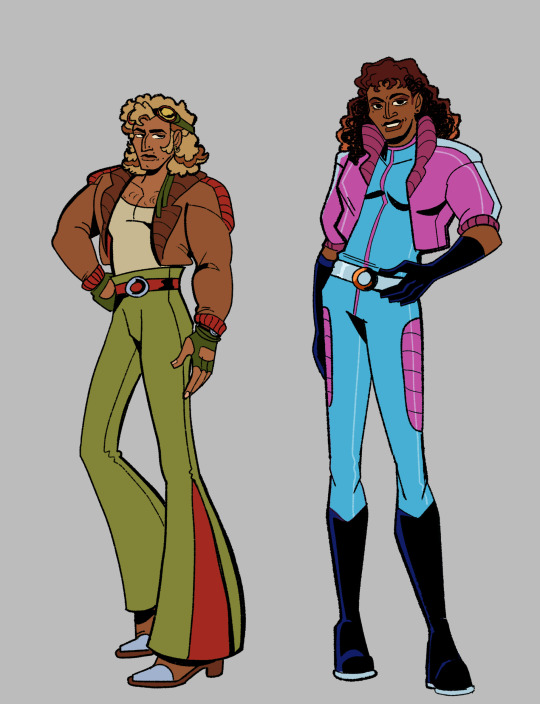
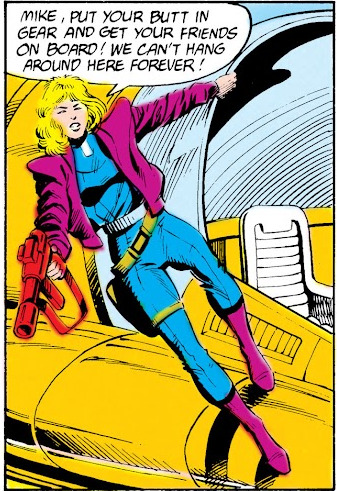
But anyway when it comes to canon I find it fun that in this arc of Vol 1 we get to see multiple reactions to Jack and Rip's clothing. They get the obvious "those are dated clothes" comments but nothing to say they are insanely out of place. They even use the excuse that they are just college students working on a play-their outfits are similar to something a student department would scrounge up at a minimal cost but still seeming off and inaccurate to the time frame they're trying to portray.
(now that's also because all historical documents of the past during this time were destroyed but- ykno. I like to imagine there's multiple reasons why people weren't like "NEVER SEEN CLOTHES LIKE THAT BEFORE!".)
It's clear to me that even in this arc, Rip's jacket is important enough to him that he makes Jack sell HIS jacket instead of his own. Now, Rip's a selfish guy and all especially at this time in his characters history, but with the meta context that Booster is Rip's father, and this arc being about Booster wanted for treason- the idea of Rip running around in his fathers old star quarterbacks jacket (while modded with red accents) just is fun to me. Not to mention even within this arc Rip is weirdly avoidant of anyone seeing him and looks EXTREMELY like a slightly younger Booster despite men in this series explicitly looking very different from each other.
aka: I think it would just add to the weird cycles that surround Rip's non-linear life.


Now I am someone who is Really into design elements that tell story, aka why I like drawing Rip's hands covered in scars because he wears improper gloves as someone who works with his hands, and why i like adding patches and scuffs to the leather jacket when I make it more detailed. It's old, It's older than Rip, It is something he cares a lot about because it's a piece of home and something that was his dads that he gets to have with him most of the time. I don't think Rip would ever call himself sentimental- i think these are things he holds onto nonetheless (similar to him literally clinging to the old family heirloom clock despite it being broken throughout time masters.) He is a character who cares so intensely but wont say it out loud, you have to show these things in the tiny details or what he surrounds himself with.

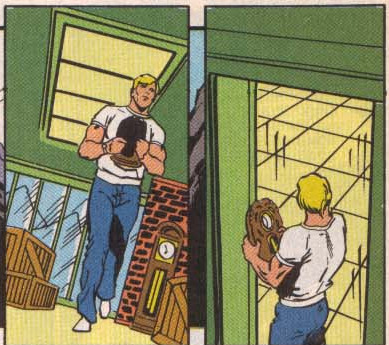
This becomes important when A lot of the paranoia he faces in time masters revolves around the triggers he experienced WHILE seeing the place his dad grew up in, what created it, how these family cycles started.
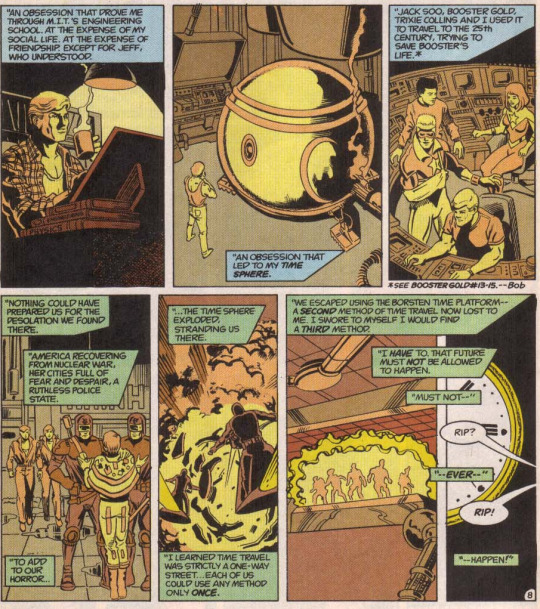
I think in a way to mirror his growth through the end of this, realizing there's things he can't change but he can change himself and how he treats others- look towards bettering his own future than fearing the lack of control he has in the (non-linear) past- I like to add the sunflower to the back of the jacket post this arc. this Arc has a lot of differences in my head with the addition of so much new lore/canon since the 90s and my own headcanons (time gardens- hence flower/bug/plant imagery so often in my shit), but still the theme remains the same really.
While Rip is a character i many times in my art associate with Daffodils ( a flower representing rebirth and such) and sunflowers are flower i associate with the likes of Wave & Booster I do think the meaning behind them of new opportunities through others and happiness is something that would both honor the history of the jacket while making it his own.

LASTLY 4th person who "owns" the jacket, and this is shown in my art a few times, is Jeff (occasionally) because I think that's the only person Rip would trust with it when he outgrows the jacket (bc I do think as Rip gets older he fills out more and its moreso a piece for someone a bit lankier). It smells old and reminds them of when they were younger. ugh. I just find the idea of sharing clothing with significant others/partners really fun ok? sap for it.
anyways sorry if this makes no sense its just one of those things i think about a lot and only i do bc its something i made up lol!!
AKA 1 stupid jacket means a lot to a few weird time travelers.

28 notes
·
View notes
Text
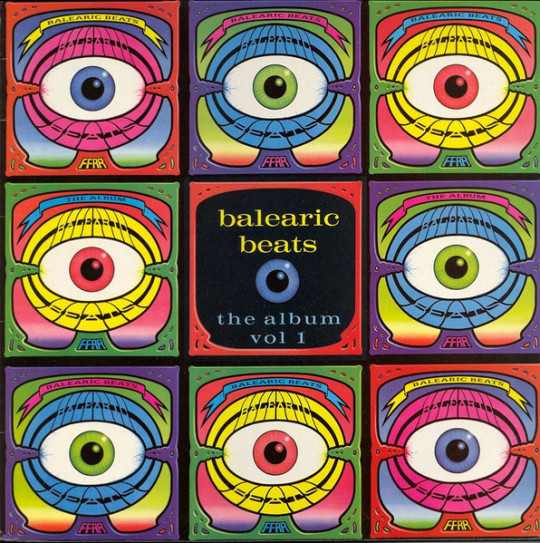
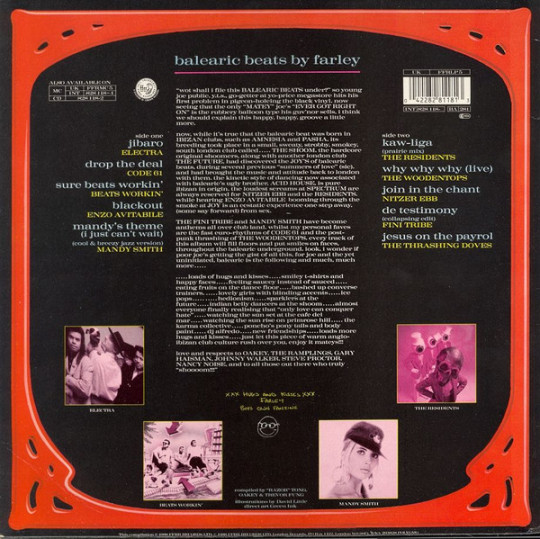
Today's compilation:
Balearic Beats (The Album Vol 1) 1988 Balearic Beat / Disco / House / Industrial
Man, this is such a momentous fuckin' album that was compiled by legends Paul Oakenfold, Pete Tong, and Trevor Fung back in '88. Here they deliver the first compilation to *ever* attempt to encapsulate the sound of the wide-ranging 'Balearic beat,' a dance phenomenon whose home was in the party capital of the world, on the Spanish isle of Ibiza, where plenty of Europeans would visit and end up drawing inspiration from. And with this album, these three guys appear to have finally successfully broken through, able to bring this very quirky vibe into the UK to coat its own exploding dance music scene during the historic 'Second Summer of Love,' which saw the Chicago-born genre of acid house reach critical mass among the youth and spawn a first generation of ravers.
But Balearic beat is not something that one can easily describe, because its most defining trait is that it really only has one rule: so long as there is some sort of tangible beat that's danceable, it'll do. Essentially, Balearic beat represents an extremely expansive coterie of a whole bunch of different genres: pop, rock, house, disco—pretty much everything that ranges between James Brown funk records and industrial music, and with blends of psychedelia, Italo flavor, plenty of leftfield experimentalism, guitar rock, and chunks of world music too. It's probably the single-most unique dance music scene that this world's ever borne witness to, and it not only allowed, but actively encouraged DJs to take unprecedented levels of risk in their own selections, as a culture of decadence, hedonism, freedom, and acceptance was nurtured and fostered.
And Oakenfold and co. really tried to bring this vibe and approach into the UK's own dance consciousness a couple times between '87 and '88, after returning from summers spent on Ibiza and opening up a couple nightclubs. But things finally started taking hold with Oakey's own Monday club night called Spectrum at gay superclub Heaven in Westminster, London. And this comp, with liner notes provided by Boy's Own's Terry Farley, represents those Spectrum club nights, as well as stuff from Shoom, which is the club where the UK's acid house movement first originated. Shoom was founded by Oakenfold compatriot Danny Rampling, whose own first trip to Ibiza with Oakey and others is what inspired him to open up the club in the first place. And Rampling took ecstasy for the first time on that Ibiza trip too 💊😁🥹.
So, from a glance, by looking at this tracklist and not having any familiarity with what Balearic beat entails, you might see this list of songs and inevitably scratch your head: Italo-jazz saxophonist Enzo Avitabile?; pop starlet Mandy Smith, who's unfortunately best known for having an underage relationship with former Rolling Stone Bill Wyman and then marrying him 🤮?; San Francisco avantgardists The Residents taking the bassline from "Billie Jean" and fashioning a cover of a Hank Williams honky-tonk tune out of it?; EBM group Nitzer Ebb?; industrial act Fini Tribe on a weird, cocaine-fueled tribal disco tip with ringing and clanging bells??? What on earth is this?!?!?
But don't worry, now that you have a proper frame of reference, it'll all make a whole lot more sense when you actually put this album on 😎.
And we gotta make special mention of this release's opener too, "Jibaro" by Oakenfold and Steve Osborne's Balearic electronic project, Electra. Yesterday I posted about an Italo comp that was put out by this same Pete Tong-run FFRR label called The House Sound of Europe - Vol. V - 'Casa Latina', and I remarked that although the Electra track on there really had no business being included—because it was neither Italian-made nor really a house tune—it was still the best track that that comp had to offer, as it was the pure ultimate in 80s Ibiza silky-chillness. But this "Jibaro" track, a cover of a mid-70s Spanish psychedelic disco-funk tune, and whose own 12-inch art inspired the album art for this comp itself, represents a different branch of that girthy Balearic tree, because this one's a full-fledged house jam; slower than a typical house tune, but a house tune nonetheless; and with a richly patched-together sonic quilt of different sounds that *majorly* diverges from all the black, queer, and acid-jacking beauty that'd been emanating from Chicago.
So, ultimately, this was a very important album in the grand scheme of things. Balearic beat brought a very elastic dimension to the acid house movement writ large in the UK, and if you'll now all allow me to unveil my corkboard-and-yarn setup here to give you all a parting glimpse of just how intertwined all of this got within the UK's own vibrant, fluid, and interconnected music landscape, let's bring all of this full-circle by talking about legendary Manchester new wave band New Order.
New Order once took a two-week trip to Ibiza that had such a profound effect on them that it yielded their fifth studio LP, Technique, in 1989. And they also owned a very popular club in Manchester called The Haçienda. In '88, The Haçienda would launch its own Ibiza-themed club nights, which then played an integral role in the development of the city's own Madchester scene, a style of alternative dance music that saw indie bands mesh their sound with psychedelia and acid house beats. And one of Madchester's biggest landmarks ended up being 1990's Pills 'n' Thrills and Bellyaches, an album by a group called Happy Mondays that was co-produced by none other than the Electra boys themselves—Paul Oakenfold and Steve Osborne! 🤯
Highlights:
Electra - "Jibaro" Code 61 - "Drop the Deal" Beats Workin' - "Sure Beats Workin'" Enzo Avitabile - "Black Out" Mandy Smith - "Mandy's Theme (I Just Can't Wait) (Cool & Breezy Jazz Version)" The Residents - "Kaw-Liga (Prairie Mix)" The Woodentops - "Why Why Why (Live)" Fini Tribe - "De Testimony (Collapsing Edit)" The Thrashing Doves - "Jesus On the Payroll"
#balearic beat#balearic house#balearic#ibiza#disco#house#house music#industrial#industrial music#dance#dance music#electronic#electronic music#music#acid house#80s#80s music#80's#80's music
8 notes
·
View notes
Text
Daring Acts of Historic Preservation
Step Right Up Have we got the collection for you! The Circus Historical Society has been preserving over 80 years of circus history, which is currently available in the Internet Archive. Publishing in-depth articles, art, and stories relating to circus history, Bandwagon: The Journal of the Circus Historical Society researches and contributes significantly to circus education dating back to 1940. Some of our favorite items include (but are not limited to):
SPEC Vol 1 No 1(1940): The one that started it all. This introductory SPEC publication, which shared the goals of The Circus Historical Society, was the first ever to bring together the combined interests of circus collectors, fans, performers, and more.
Bandwagon Vol 4 No 2 (1960): In addition to the visually compelling art on the cover, this issue contains a fascinating log of all the elephants in circuses across the United States from 1900 to 1959.
Bandwagon Vol 43 No 1 (1999): In true Internet Archive fashion, the intersection of wacky and wonderful with technological innovation will always pique our interest. This issue’s write-up on the impact of the stake driver (invented in 1904) on the resurrection of big-top tents is one we recommend reading about.
Between the marvel of circus assembly, appreciation for the historic art and culture it provided, and a behind-the-scenes understanding of running a full show, this collection of historic circus paraphernalia has much for those curious to explore.
-The Internet Archive Team
5 notes
·
View notes
Text
So cute!! I love the colors you chose, especially for the flowers ❤️

@artist-ellen I have finished my first attempt at coloring your coloring book (:
#how cool is this#the coloring book#historical fashion vol 1#historical fashions coloring book#ellenart#so cute#historically inspired
56 notes
·
View notes
Text
George W. Maher, architect - part 1
Hutchinson Street District, Chicago
Unless otherwise noted, photographs are by Roger Jones

George Maher in the 1890s (Kenilworth Historical Society)
George Washington Maher (December 25, 1864 – September 12, 1926) was an architect who worked in the United States mainly during the first quarter of the 20th century. Maher was noted for his designs in the Prairie Style, and in his time was often more well-known than his contemporary Frank Lloyd Wright.
Maher was part of a new movement in architecture that sought to establish a distinctive American style. East Coast architect Henry H. Richardson had garnered attention by designing monolithic stone buildings. In Chicago, a new architectural style was emerging. Variously labeled as “The New School of the Midwest,” “Rationalism” or “Chicago Style,” it is today known as the Prairie School.Many young architects had begun their careers together and were inspired by Richardson and Sullivan. Maher, George Elmslie and Frank Lloyd Wright had worked together in the office of architect Joseph Lyman Silsbee, whose influence can also be seen in their work. Evanston Roundtable
Maher is well-represented in Chicago, notably in the Hutchinson Street District, and found early success in Oak Park, as well as in Kenilworth, where he lived.
This post focuses on five houses he designed on Hutchinson Street, and includes links to interior photos and historic images.
Mosser House, 750 W. Hutchinson St., 1902

The facade of the Mosser House isn't easily seen from the street. Photo: Zillow



Exterior views
This house was designed by George W. Maher in 1902, and sits on 6 city lots of private landscaping, designed by landscape architect Jens Jensen. The home's interior features details crafted by designer Louis Millet, who also designed the stained glass Tiffany dome in the Chicago Cultural Center. The home is located in the former Scales parcel (see Scales house below).




Above floor plans and fireplace views courtesy of Pricey Pads. Click on link for extensive views of the house.
Willliam H. Lake House, 832 W. Hutchinson St., 1904

Front view



Above: images from the Inland Architect and News Record, Vol. XLVI No. 3, Oct. 1905
W.H. Lake was a grain broker and senior partner in the firm of W.H. Lake & Company which was located in the Board of Trade Building. Lake, following the lead of his neighbor, John Scales, chose to commission George Maher as architect for his home, which was constructed in 1904. In the Lake House, Maher developed his final version of the Farson House (1897) type. In this type of design Maher made his most significant contribution to the indigenous American architecture he worked so hard to develop. Unity is achieved by formal arrangement of elements within the design. The basic form of this house type is a massive rec- tangle with horizontal elements dominating the composition and drawing it together. Hutchinson Street District, City of Chicago Landmark Designation Reports
Images of the interior an be found on the real estate site here.
Seymour House, 817 W. Hutchinson St., 1913



The house at 817 Hutchinson was designed by George W. Maher and constructed in 1913 for Claude Seymour. Drawings of the front facade were published in the Chicago Architectural Club Catalog for 1913. Seymour was a vice-president of Otto Young and Company, an upholstery business. Like many of his neighbors, Young was active in the Chicago Automobile Club and a member of many other fashionable clubs.
In his design for the Seymour House, Maher borrowed heavily from English country houses by C.F.A. Voysey and the firm of Parker and Unwin. The two-story house is basically H-shaped, though a one-story porch (not an addition) does break the symmetry of the facade. The many windows and their arrangement here are typical of Parker & Unwin's designs, but the geometric pattern in the leaded glass is distinctly the work of Maher.
This design and its variations are used consistently in all decorative elements to lend a measure of continuity; Maher called it his motif-rhythm theory.
City of Chicago Landmark designation Reports

Image from The Western Architect, March 1914
Images of the interior an be found on the real estate site here.
John C. Scales House, 840 West Hutchinson Street, 1894


John C. Scales came to Chicago with his parents in 1845 when he was just 4 years old, and his father set up a commission business in town, where John eventually became a partner. Scales, the son, invested his money in real estate and purchased a section of the Buena Park subdivision on the city's then remote north side. Chicago designslinger
The Queen Anne style and busy roofline contrast strongly with Maher's later designs along Hutchinson St. The rough-cut stone along with half-timber design is almost playful.

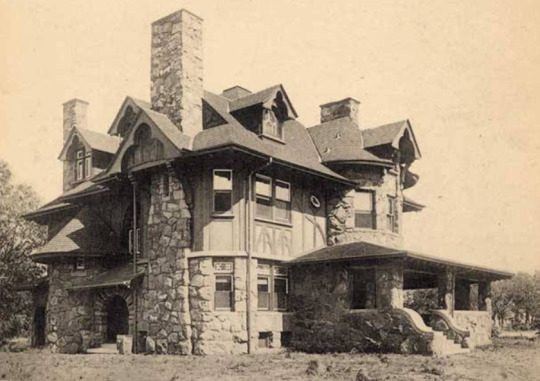
Archival photo of the Scales House
Brackebush House, 839 W. Hutchinson St., c. 1909-10

Maher designed this home in 1909 for Mrs. Grace Brackebush.
Despite the rather awkward handling of certain elements in the design of the house at 839 Hutchinson Street certain experts feel that the design is the work of George W. Maher. The design probably dates from the period between 1905 and 1910, when Maher was beginning to work with a new type of design, one that was inspired by English architects such as C.F.A. Voysey and the Viennese architect Joseph M. Olbrich. - Hutchinson Street District, City of Chicago Landmark Designation Report

Images of the interior can be found on the real estate site here
Sources:
City of Chicago Landmark Designation Reports, Hutchinson Street District, Revised Summary of Information September 8, 1975, Commission on Chicago Historical and Architectural Landmarks
Geo. W. Maher, a democrat in Architecture. The Western Architect, March 1914
George W. Maher's Prairie Style. Owlcation.
Four Architectural Gems in Chicago's Buena Park for Sale. Chicago Magazine.
Buena Park Neighbors, History of Hutchinson Street.
The George W. Maher Society, About George W. Maher.
Block Club Chicago, Want to Own a Piece of Chicago's Past?
Evanston Roundtable - George W. Maher
#George W. Maher#architecture#chicago#buildings#photography#Maher#Hutchinson St.#residences#prairie style
5 notes
·
View notes
Text


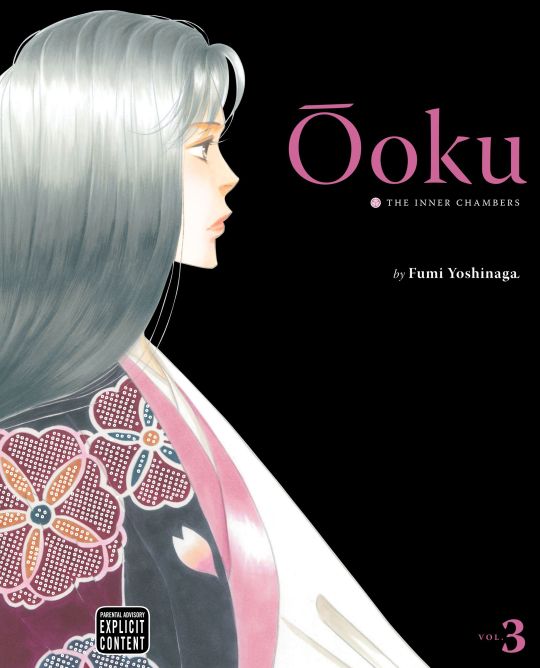
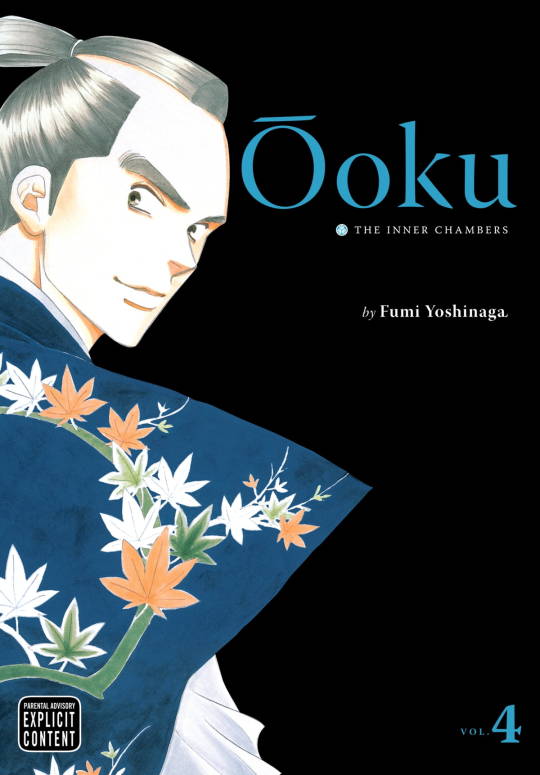
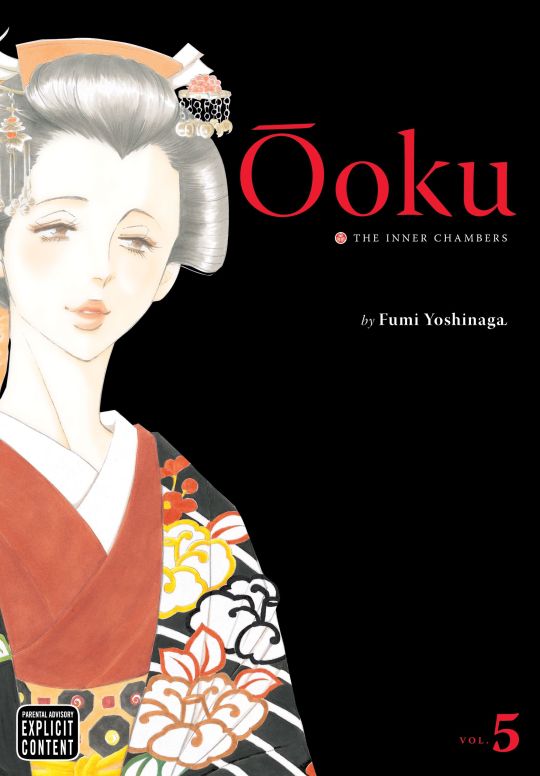
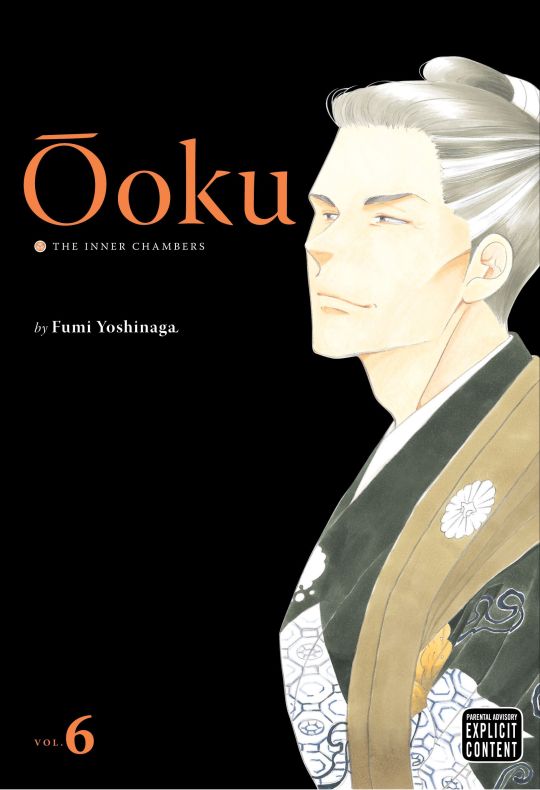
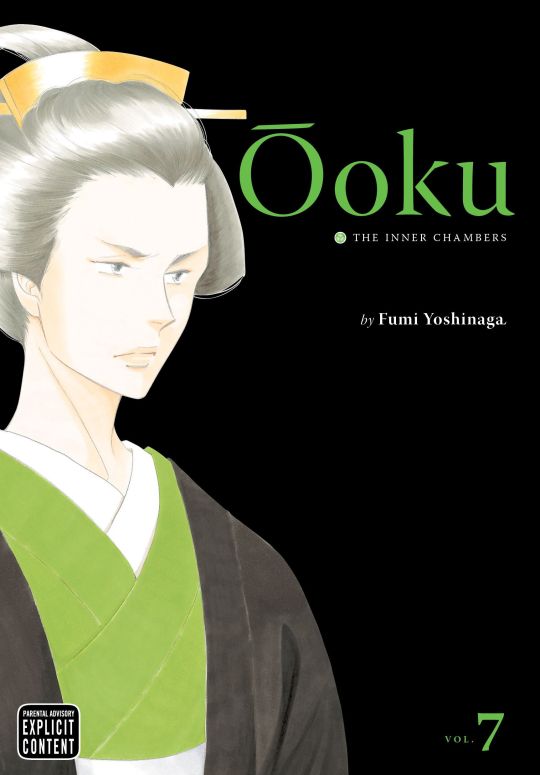



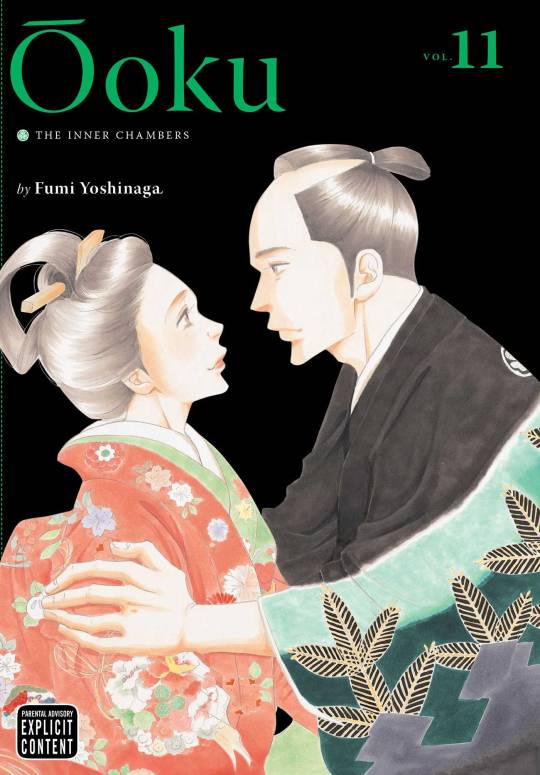

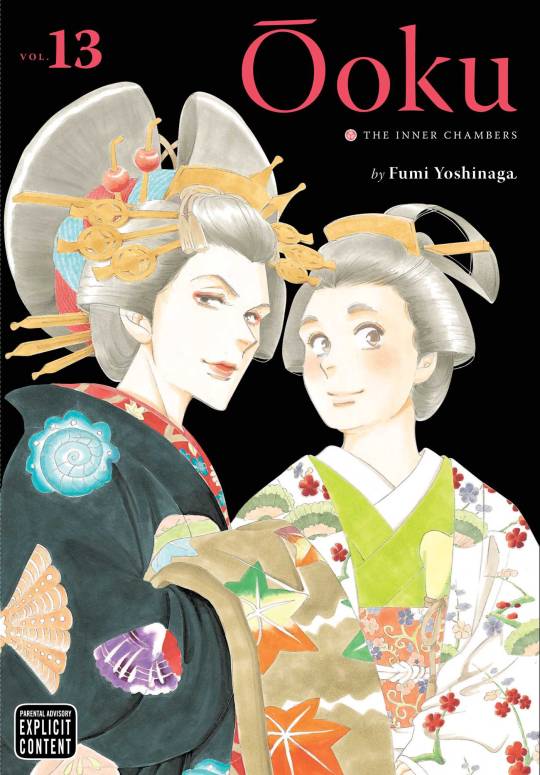



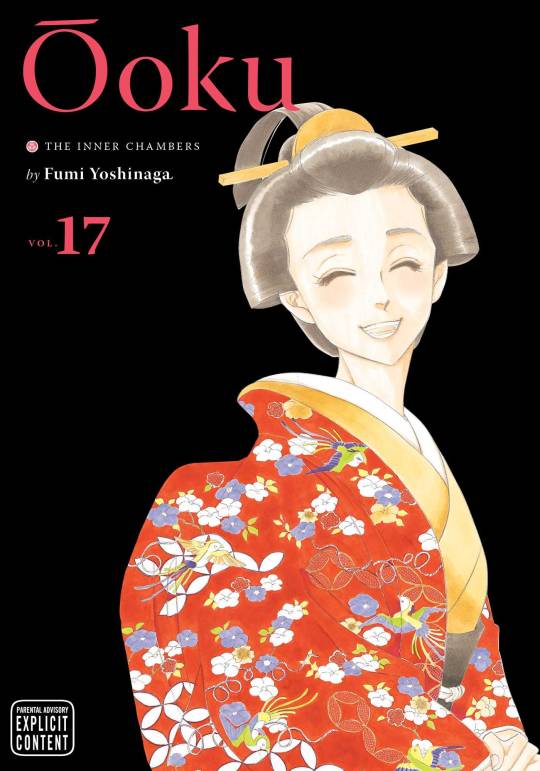
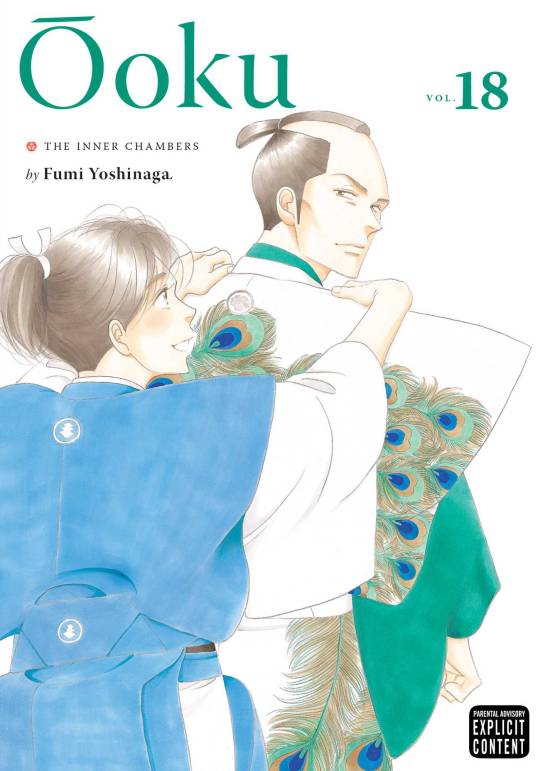

Title: Ooku: The Inner Chambers, Vols. 1-19 Author: Yoshinaga Fumi (mangaka), Akemi Wegmuller (translator) Genre/s: historical, alternate history Content/Trigger Warning/s: rape, attempted rape, incest, murder, poisoning, physical and emotional abuse, natural disasters, starvation, fatal illness, parental death, death of children, miscarriage, killing of pet animals Summary (from publisher's website): In Edo period Japan, a strange new disease called the Redface Pox has begun to prey on the country’s men. Within eighty years of the first outbreak, the male population has fallen by 75 percent. Women have taken on all the roles traditionally granted to men, even that of the shogun. The men, precious providers of life, are carefully protected. And the most beautiful of the men are sent to serve in the shogun’s Inner Chamber… Buy Here: https://www.viz.com/ooku-the-inner-chambers Spoiler-Free Review: It's been years since I read the first three volumes of this series, but then I found out that the first season of the animated version was on N*tfl*x so I decided to give that a shot, as well as find the rest of the series. Took me a while to get all the volumes, but once I had them all it was easy to do a speedrun, so to speak, and finish it. One of the first things I need to say about this series is that it is bittersweet. Tragedy abounds in this series, as does heartbreak, and all manner of desires and goals remain unrequited and unfulfilled. That being said, I still thought this was a great read. I can understand why some people would choose not to pick it up because of the potential triggering content, or just because they don't want to read something that'll put them through the emotional wringer (as it were), but I found that I liked how tragic this whole story was - not for tragedy's sake, but because of the characters. They're a complex lot, and not all of them are good people, but I enjoyed reading about how the choices and decisions they made affected not just themselves and those around them, but the characters who came after them - a plot that's allowed by the long scope of the manga's story (from the reign of the third Tokugawa shogun, all the way to the dawn of the Meiji period some two hundred years later). if there is any other media I could compare this to, at least on the surface, I'd say it comes pretty close to Game of Thrones - up until Season 5, since the show infamously loses the plot after that point. Fortunately this manga has a much more coherent storyline, even as it features many of the same beats such as forbidden romance and court intrigue. The alternate history aspect, wherein Japan is ruled by women instead of men, is interesting not because it drastically changes the way the world works, but because it showcases how so many things actually remain the same. Women are still people, after all, and power is still power, and people in power do things in similar ways regardless of their sex or gender, with similar outcomes both for good and for ill. Overall, this was a pretty good read, even if it was heartbreaking in a lot of places, and even if there's plenty of content that made me flinch, and which will very likely trigger other readers. If there's one thing that I found a bit off-putting about this, and which other readers might find off-putting if the trigger warnings don't, was the use of Shakespearean-style English, especially in the first half of the series. I suspect it was an attempt by the translator to mimic the more old-fashioned Japanese in use during the 1600s-1700s, but it can be rather jarring in certain scenes. One gets used to it after a while, but it can take one out of the moment sometimes. Rating: four kimono and one uchikake (4.5)
#book review#book reviews#ooku: the inner chambers#ooku#manga#historical#alternate history#yoshinaga fumi#akemi wegmuller#books
14 notes
·
View notes
Text
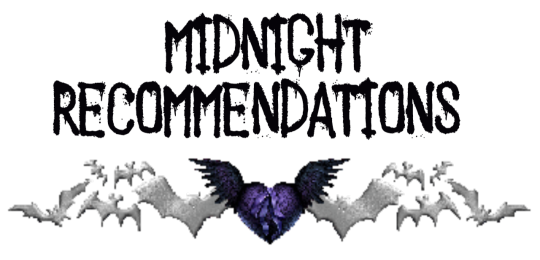
midnight recommendations, by bones, vol.1
if you...
× are a victorian vampire
× likes to study dark historical facts
× was executed for witchcraft by the church
× thinks corsets are the height of fashion
× can't decide between wanting to live in a castle in the mountains or a cabin in the woods
× has an unusual love for haunted dolls
× are friends with ancient mythological creatures (or if you are an ancient mythological creature)
then you might like: Rasputina
#goth#goth subculture#goth music#victorian goth#vampire goth#goth bands#midnight recommendations#rasputina
9 notes
·
View notes
Text
OMG!!! This is so cool ❤️❤️❤️ oh they are adorable! I’m going to be giddy for the next 4 hours just thinking about this.

This page from @artist-ellen's coloring book looks just like this ceramic figurine my grandma made in the 70s!
#it was not intentional but i love that the goose is looking at the coloring page like ''where the hell are her geese?“#historically inspired#historical fashion#historical fashions vol 1#i hope you have fun#y’all don’t understand#y’all are the best#the coloring book#ellenart
106 notes
·
View notes
Text

The cover is nearly complete!!
Putting this physical book together is stressful.... it's why it has taken so long. But things are moving steadily! It won't take too much more to get this baby launched!! It’s frightening how close it is to launch!!! In related news kdp doesn’t let “low content” books have a scheduled launch day so… keep a look out for sporadic gremlin productivity hours. Let’s see if your copy arrives before mine can?
Thank you for your patience!
I am the artist! Do not post without permission & credit! Thank you! Come visit me over on: instagram.com/ellenartistic or tiktok: @ellenartistic
#historically inspired#redesigning heroines#historical costuming#coloring book#ellenart#historical fashion#historical fashion vol 1#it’s a boring title but it’s working#no more delays#getting this done before gift-buying season arrives is my one goal#wish me luck
262 notes
·
View notes
Text
Review: Japanese Special Effects Cinema:Godfathers of Tokusatsu Vol. 1
Over the past Holiday season I was gifted a book I had been wanting to read since its release in April; Japanese Special Effects Cinema:Godfathers of Tokusatsu Vol. 1 by J.L Carrozza.
As the book's title suggests, it's a comprehensive guide on the history of Tokusatsu. Vol. 1 spanning from the early 1900s to the end of the 1970s, progressing in a linear fashion with each major release while also providing context when needed. The start of the book gives a general overview of the special effects landscape in cinema from the earliest days, with works from international filmmakers laying the foundation that would eventually lead to Japan's own contributions and unique visual styling developed in the 30s.
The book truly picks up in the second chapter spanning from the late 30s to the end of WWII, when the concept of scale miniatures was truly crafted into an artform all its own and early suitmation was coming to fruition. The general presentation is to give historical context and background information on an upcoming project, followed by a particular film including its title, director, the film's release date, and the production history of the film itself. Carrozza then delves into his own general analysis and thoughts on the film or series, with a particular focus on (but not limited to) the special effects quality. Finally ending with more information about the film when applicable; contemporary reception, if it was a debut director, or if the film was seen by and noted as a big inspiration by a well known person. Anno of course comes up a lot, but he's far from the only one. These analytical segments carry themselves with both a professional earnestness in examining the works, while also being fairly casual. One may even get a sense that Carrozza’s sanity is being tested by some of the later Gamera Films, probably some of the funniest moments within the book and one I find incredibly relatable.
Unsurprisingly, a great deal of the book deals with Eiji Tsuburaya. The man simply was incredibly prolific and damn near everyone in the industry was either directly taught or inspired by him until his death- which even then his many proteges would carry on the tradition and inspiring others in turn, which is one of the most intriguing parts of the book, particularly the aftershocks Tsuburaya’s death had across the entire industry.
However, I do want to point out that the book doesn't pay much service to Tsuburaya's personal life outside of providing context or important details, nor should it. After all, Master of Monsters is already a deep dive into the man's life overall. So while details such as his change in name and conversion to Catholicism are mentioned, they're not the focus point; the movies are. And of course, as major of a player as Tsuburaya was, he is not the only one given the spotlight in regards to their contributions. The Yagi brothers are regularly mentioned for all their monster creations, Noriaki Yuasa of Daiei is regularly talked about, even Tomio Sagisu and his weird Cat obsession. And the list continues to grow and change as new talent emerges, becoming famous in their own right.
By and large Screen Writers, Producers, DPs, pyrotechnics, prop and set builders, and various other units are brought up and given background information whenever possible and always a name to those behind the magic. The information is detailed, yet concise. The sheer dense nature of the book comes from how much is covered and the broad scope of covering every notable Tokusatsu production until the end of ‘79. (I generally can read a novel in about 4 days, this took two weeks)
Quite frankly, it's refreshing to see so much condensed into one space for so many seldom talked about figures in the industry, where they got their start, ended up, etc.
Equally refreshing is a wider focus on not just DaiKaiju films or just one studio, but a plethora of Toku from various genres, production teams, and how the industry shifted over time– to say nothing of the influence major Hollywood films would have on the medium. War films, historical films, disaster movies, even Yokai films, occult films, space films, psychedelic horror, all are covered. And because the book goes in chronological order, the topic is always changing. 1965 kicks off with None But the Brave, then it’s The Retreat from Kiska, followed by Frankenstein Conquers the World, Zero Ace, and then over to Spy Catcher 13 on Television. It's not just about Godzilla, Gamera, and Ultraman. It's also Watari The Ninja Boy, Goke, Wind Velocity 75 Meters, The Bullet Train, Zero Fighter, ESPY, and Japan Sinks-- the film that inspired Shinji Higuchi.
We’re not just focusing on monsters and Super Heroes, even if that will always be the bread and butter of the medium, nor is it even just Japanese films. As long as a Japanese crew was involved in some capacity, however limited (i.e. Inframan) it’s covered.
This is by far the most appealing part of the book for me personally. Not only is its information a goldmine, but it can perhaps serve as an even broader introduction to more than just your typical idea of what Tokusatsu is.
The comprehensiveness and thoroughness of the information contained makes this both a captivating history lesson, and valuable resource to rely upon to gain a better understanding of Japan’s film history– at least in regard to the medium in question… With one exception that I have to get into, and boy do I really hate that I have to do this because 99% of this book is really great.
As mentioned, a large amount of the book revolves around Tsuburaya and those around him, those who could carry on his teachings, and those who would go even further with what practical effects can do. I'm very pleased to say the book doesn't just stop being engaging with Tsuburaya's passing, it's very much interested in where and how the industry gets on without such a prominent figure. Carrozza clearly has a deep love of miniatures in particular, you can tell by the enthusiastic writing this is his favorite aspect of Tokusatsu as it is with most people, and it plays a part in how much information is present. Because of that Tsupro, Toho, and even Daiei have a lot more readily accessible information to their history, just in general. It's why something like Spectreman can have four and half pages of production information, but you're lucky to get one or two on Ninja Arashi. What is there to say about something like that?
That's not to imply any of this information is easy to get, by no means. It's very hard work, particularly to sift through and condense everything- not to mention filtering possible contradicting stories or dated sources. But some things are easier than others. I will say it's impressive the amount of info that's presented for other studios, particularly P Productions and even Toei. They're given adequate attention, even in the early days. The back of the book features a full bibliography of all the sources and citations for this information, and a vast number of books pertaining to Tsupro, Toho, Daiei, even a few on P productions. Given their long and vast histories, it's not too surprising that there would be dozens upon dozens of books on the subjects. However, Toei and more specifically Kamen Rider are the odd ones out with the least amount of books, which also isn't surprising.
But this does lead to what is quite possibly the most egregious part, which is Kamen Rider '71's segment.
Now, just to be clear, I don't wanna dunk on Carrozza. What he's done is truly magical and I am deeply appreciative of all that's here. But this part is flawed, and it's putting wrong information out there.
There are some good aspects. The book mentions early production concepts that are often glossed over, like how Tiger Mask was partially the inspiration, and even early concept names like Maskman K, Kamen Tenshi: Masked Angel, and Cross Fire. It covers Masaru Igami, Shinichi Ichikawa, and Shozo Uehara being brought on as writers. Although there's no mention that both Ichikawa and Uehara left to work on Return of Ultraman due to conflicts with Producer Toru Hirayama, while Masayuki Shimada and Hidetoshi Kitamura would take their place.
What is noted is that many of the concepts under Cross Fire were maintained, which is true. The Scars that show up when angered, Ruriko Midorikawa as the daughter of a dead professor, the Spiderman. All of that was under Crossfire-- Shocker as a villain organization goes back even further. A surprising amount of the concepts were attributed to Toei's creative department, even the scars which ended up only appearing in the manga.
Now the book doesn't get into all those fine details, it starts and stops at "Many concepts from Cross Fire were maintained" which is fine. Gotta keep things condensed and a lot of that information is superfluous for this type of book. We don't need to get into Crossmask: Kamen Rider or Hopper King. That's too much of a deep dive.
Where things take a turn is in regards to the design aspects. A popular and incorrect over-simplification of the story involves Toei wanting a Skullman show or something like it, but then it was decided that would be too violent so Ishinomori came up with the Grasshopper look. Another is the inverse where Ishinomori wanted a Skullman show and Toei said no to the premise/design.
Both of these are wrong with an inkling of truth in them. But the book presents a tale I've never heard. The way it's told here is that Toei wanted a Skull motif to replace Crossfire, but Ishinomori felt it was redundant since he just worked on the Flying Phantom Ship in '69. He created over 50 designs and his son Joe picked the Grasshopper, which played well into some environmental themes Ishinomori was pushing for. There is ZERO mention of Skullman made just a year earlier, which is such a bizarre missing piece and the only version of Kamen Rider’s creation that I know of with no Skullman.
As with the others, there are true parts in there.
The actual tale is that Ishinomori wanted something downright grotesque and felt that Crossfire's design was limiting. Ishinomori proposed the Skull motif to Toru Hirayama, who in turn relayed it to fellow Producer Yoshinori Watanabe, who despised the proposal. Watanabe felt it was too derivative of Skullman and wanted something original, while the Broadcast Station, MBS, felt it was too scary for their family friendly time slot. Ishinomori made over 50 designs, liked a Grasshopper one best because it was still creepy and helped play into an environmental theme of nature fighting back that Ishinimori was fond of.
There was still doubt around the design, but Ishinomori's son, Joe, went through the designs and picked the Grasshopper, so it was sent for approval.

Now, this book mentions that Hirayama felt the insect design was weak as bugs are small, but eventually came around. Although it's claimed by Hirayama in his own book that it was MBS' Tetsu Shouno, who felt the insect design was weak, while Hirayama defended it. Hirayama did however have some reservations about the design possibly scaring children. When the helmet was finished, it was shown to a little girl, nearly driving her to tears, much to Hirayama’s horror. But it was too late to change. The rest of the book’s segment is largely what seems speculative, like The Hulk being an inspiration because...transformation? One part also mentions that they originally wanted the character to Grow a la Ultraman, but Ishinomori talked them out of it- I've not been able to find anything to support that. The closest I know of off hand was many years later in Kamen Rider J, which Ishinomori was supposedly against with exception to if it was treated like a one off miracle at the end of the movie. That doesn't mean it’s not true to ‘71, mind you, but I can't say that's an unheard of gem of information, given the flaws elsewhere.
What's weird is everything following is fine. The analytical section doesn't really get into the human themes of the series, but it rightly points out the grittier overall tone and appearance of the series, noting the first 13 episodes are among the best of the era. Specific designers at Equis are also mentioned, including Akira Takahashi, Tsutomu Yagi, and Masamitsu Sakuma. Information like that isn't often discussed, it's just a shame that so much the preceding info is garbled if not outright wrong.
But it's also not all too surprising as information on Kamen Rider has always been extremely muddled, and there aren't a ton of solid resources in comparison to other productions, despite how notable the franchise is. I think the best example of that might be that goddamn Zone Fighter has more detailed information on the production side than Kamen Rider does (Though it doesn't hurt that Zone Fighter is more effects focused than Rider to begin with).
In stark contrast with the rest of the book's well researched material, Rider feels like the information is half remembered and lacking the details of other productions. Even when we get into V3 which has much more readily available information thanks to airings in Hawaii and a DVD release, it has a fairly sparse section on the production end.
And there may be some truth to the half remembered details part. One of the books listed as a source is Fujioka's The Truth about Kamen Rider and Takeshi Hongo, published in 1999. And I would not be shocked if some of the information contributed to not only the odd information contained here, but the general murky history overall. There's a solid chance Fujioka's recollection may have forgotten some details, or gotten some wrong. I would've hoped that another book cited; Toei x Ishinomori would've corrected that, but there's no telling how detailed that book gets.
Regardless, other works like 2007's The Men Who Made Kamen Rider tell the story above, in addition to Toru Hirayama's 2012 bio: Crybaby Producer's Last Words - 50 Years of a TV Hero's Steps. Neither of course are in the bibliography. Even if we were to very generously assume that Hirayama's book was incorrect or embellished, I think it would be worth mentioning and getting into the varying scenarios instead of relying on a limited source when the information is out there, just not utilized.
It's a shame because I do truly feel this is an invaluable book with solid information, especially for lesser known productions, one that also gives a look at how trends would shape the industry. Hell, I finally have a name and photo for the damn machine Toei used for all its composite shots; the Totsu ECG system.
I still highly recommend the book to anyone interested in Japanese special effects, a ton of love was poured into this. But I also can't overlook that a major franchise has a mess of garbage information that only further clouds the murky waters. I hope this is corrected in a 2nd edition or at least updated info is mentioned in Vol 2 due in March. As is, do not cite or rely on this as a source for Rider history, it's the one spot I can definitively say is bad.
2 notes
·
View notes
Text
How cool!! I’m ever so curious about the method/medium, would you tell me more about it?
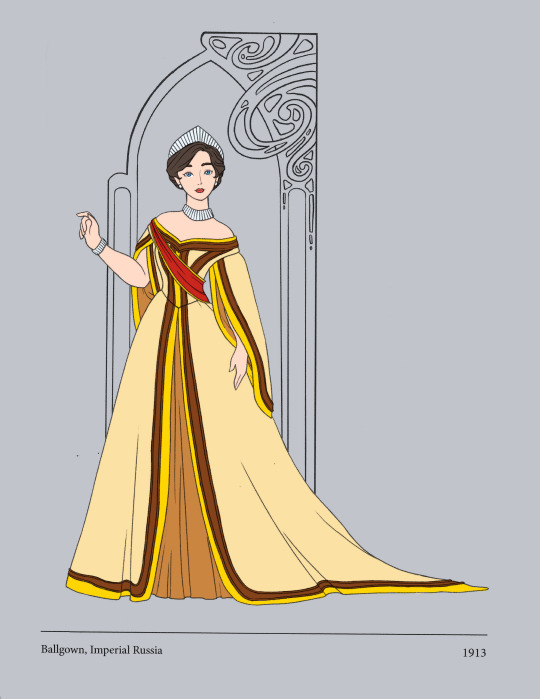
A colored page from @artist-ellen's coloring book! Will likely add more over time, nice to share coloring art sometimes.
113 notes
·
View notes
Text
Week 7 : Body Modification: The Cosmetic Gaze
Body modification, an enduring aspect of human culture, has long been intertwined with the desire to alter and enhance physical appearance. From ancient tattoos and piercings to modern-day cosmetic procedures and digital filters, the human body has served as a canvas for self-expression. Body modification is a global phenomenon, practiced in diverse forms and for various reasons (Barker & Barker, 2002, p. 92). Examples from around the world include nose piercings associated with Hinduism, neck elongation in Thailand and some African cultures, henna tattooing in Southeast Asia and the Middle East, tooth filing in Bali, lip piercing and earlobe stretching in parts of Africa, and both male and female circumcision in numerous regions (Larkin, 2004; Barker & Barker, 2002; Bendle, 2004). These practices reflect the cultural, religious, and social significance attached to body modification in different societies.

One of the earliest known instances of body modification belongs to Ötzi the Iceman, a 5,300-year-old mummified body discovered in the Alps. Ötzi's body bore 61 carbon pigment tattoos, possibly indicating social status or involvement in ritualistic practices (Samadelli et al., 2015). These markings reflect the deep historical roots of body modification and its significance in human identity.

The concept of body modification extends beyond mere aesthetics; it often carries deeper cultural, social, and personal meanings. In contemporary society, the term "body art" is commonly associated with artists who use their bodies as both subject and medium, producing works that challenge societal norms and explore themes of identity, gender, and vulnerability. Artists such as Marina Abramović and Chris Burden have pushed the boundaries of body art, making their physical bodies central to their creative expression (Vergine, 1974). This practice highlights the body as a site of both artistic creation and social commentary.
Nowadays, with the increasing number of body modification practitioners, the practice has become more normalized and widely accepted. This normalization extends to various forms of modification, including tattoos, piercings, and plastic surgery. Many individuals use these methods to alter, "correct," or "perfect" certain aspects of their appearance, often viewing their bodies as canvases for creative self-expression. While a desire to enhance body image motivates some, this is not the case for everyone who engages in body modification. For many, the appeals of body modification stems from a desire for personal expression or the wish to challenge conventional beauty norms. Some embrace it as a form of fashion, using their bodies to reflect their inner selves and live authentically through their chosen aesthetics (Kang & Jones 2007). One recent study suggests that individuals who were moderately to heavily tattooed have “an increased sense of self-confidence after having pierced or tattooed their bodies” (Carroll & Anderson 2002: 628). However, there is still stigma associated with several types of body modification, including scarification, tattoos, and body piercings. The body is considered sacrosanct by some, who consider it a gift from a higher power. In their perspective, altering the body through modification undermines its natural state and defies its intended sanctity. So what do you think about it?
References
2024, Researchgate.net, viewed 1 November 2024, <https://www.researchgate.net/profile/Matt-Lodder/publication/282667817_Body_Art_Body_Modification_as_Artistic_Practice/links/5617ac5408aee135b3b23ef0/Bo>.
Bradley University 2016, ‘Bradley University: Body Modification & Body Image’, Bradley.edu, viewed <https://www.bradley.edu/sites/bodyproject/disability/modification/>.
Samadelli, M, Melis, M, Miccoli, M, Vigl, EE & Zink, AR 2015, ‘Complete mapping of the tattoos of the 5300-year-old Tyrolean Iceman’, Journal of Cultural Heritage, vol. 16, no. 5, pp. 753–758, viewed
0 notes
Text
Reading This Week 2024 #39
I have the growing impression this week that I can't quite call myself a homebody anymore. I called myself one to my roommate today and she disagreed, which I suppose can be chalked up to my increasing social business. I keep getting involved in things that have me getting out of the house to attend them, or having friends invite me to events that they want to go to. It feels good!
Finished:
Most Ardently by Gabe Cole Novoa, audiobook narrated by Harrison Knights I said a lot about this in last week's update but as a note: there is a full page in my reading journal taken up by my thoughts on this book. A few notes I will make here: 1. It switches the setting of the pride&prejudice story from the English countryside to London itself in a way I found quite jarring. 2. I feel like the entail/primogeniture stuff with a trans boy Bennet should have come up way earlier in the book than it did (at the end. as a solution to everyone's problems because well its turns out the second oldest bennet child is a man! english property law is inexplicably trans-affirming!), like I would have loved to see Oliver frustrated and indignant that because everyone thinks he's a woman he won't rightfully inherit his family's property throughout the book! i find anxieties about financial stability and future prosperity really key to Austen works, so that would have made the inspiration feel more grounded than it did. personally I am less interested in Most Ardently's very modern version of queer & trans-ness, since I tend to come to historical fiction with an interest in engaging the ways that gender feelings might have been embodied and articulated prior to our present language of trans-ness. Nonetheless! I'm sure many teenage gay trans boys will find this book and feel seen. The loving and detailed descriptions of Regency men's fashion was absolutely a highlight of this book for me.
Love Me Like You're Real by Cynthia Yuan Cheng this is the comic I linked in a little post gushing about it this week. it's advertised as a BL comic (though produced in English from the start) about a transmasc hopeless romantic falling into the post-canon of their favorite fantasy novel and directly into the arms of their fictional crush. it's a really lovely story about growing out of passive longing and yearning and into an active pursuit of romance and love as Terr takes lessons from their fictional romance forward into their day-to-day
The Wicked + The Divine, Vol. 3: Commercial Suicide written by Kieron Gillen, art by Kate Brown (#12), Tula Lotay (#13), Jamie McKelvie (#14), Stephanie Hans (#15), Leila Del Duca (#16), & Brandon Graham (#17)
The Wicked + The Divine, Vol. 4: Rising Action written by Kieron Gillen, art by Jamie McKelvie I have come out of these volumes a bit confounded by the motivations and choices made by the main antagonist. she really seems to just be making a bunch of problems for herself that don't need to be problems. and secondly i don't like the twist that we didn't see a whole chunk of events that took place at the end of volume 2. that felt like a cheap reveal, and i liked what i had imagined was the case better
Fantasy Island: Colonialism, Exploitation, and the Betrayal of Puerto Rico by Ed Morales, audiobook narrated by Sean Duffy part of my ongoing efforts to learn about the history and colonial present of Puerto Rico (where half of my family is from). reading this led to some emotional rambling in a friend's DMs about the really shitty bind PR is in currently
The Apothecary Diaries, Vol. 1 original story by Natsu Hyuuga, character design by Touco Shino, manga by Nekokurage ohoho? spunky smart girl protagonist and a beautiful eunuch as well? sign me the fuck up I love the court intrigue vignettes
Hell Followed With Us by Andrew Joseph White, narrated by Shaan Dasani, Graham Halstead, and Avi Roque I read this for october's queer lit book club (YA post-apocalypse horror). I would have absolutely loved to read this book in high school at the peak of my violent fantasies of sprouting wings in painful bloody glory. however it was published in 2022 so i cannot do that, and the book was okay to read as an adult a bit removed from those feelings. excited to hear that Lilly Wachowski is working on a movie for it!
"Take His Memory to Your Grave" by Shelley Parker-Chan this is a short smut story that Parker-Chan released initially as a preorder reward for He Who Drowned the World but is now available on their website. it's toxic hate sex between Lord Wang and Ouyang prior to their appearances in She Who Became the Sun, and it is so funny in a way that only these two tragic idiot assholes could be. a friend said that my description of this was the best pitch i've made for the series yet
Ongoing:
Magic's Pawn by Mercedes Lackey, narrated by Gregory St. John I am reading this to keep up with Shelved by Genre and really loving it. I might have to check out some of Mercedes Lackey's other work after they finish with this trilogy
Rethinking Rape by Ann J. Cahill
Lady Eve's Last Con by Rebecca Fraimow picked up a copy at the library this week. only read the first chapter. got a lot else on my plate but i will Try because i've heard good things
Frieren, Beyond Journey’s End, Vol. 2 by Kanehito Yamada
DNFs:
The Shabti by Megaera C. Lorenz, narrated by Matt Haynes i picked this up based on a good review from KJC comparing it to Jordan L Hawk's work. I should have remembered that I don't like Hawk's books all that much. There was nothing egregious that made me drop it, but I realized 75% through that I actually didn't care about any of it. sorry, i just wasn't interested in either the shitty ex-boyfriend plot nor the angry ghost plot, and i wasn't terribly hooked on the romance. not really worth the time i gave it
Lord of Eternal Night by Ben Alderson, narrated by Shaun Grindell this was on my TBR from my time searching a year and a half ago for gay vampire romances. i found the audiobook narrator so grating and I didn't find the dynamic between the vampire and the witch sent to kill him sexy enough to push through. 25% into the book and they've barely interacted? come on...
1 note
·
View note
